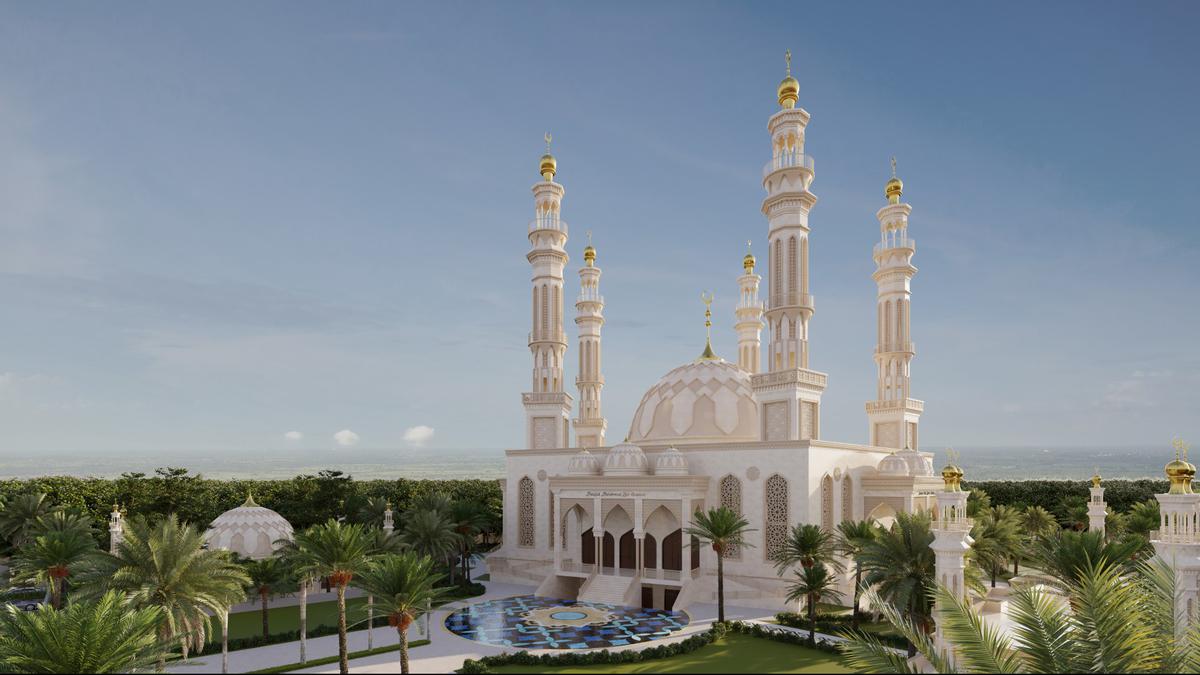Ayodhya: Hindu temple opens, but mosque is far away
As required by the Supreme Court ruling settling the dispute, the Uttar Pradesh government has allocated land for the new mosque, which will be some 25 kilometres from the city centre. Thus far, the project exists only on paper while the local Muslim community is wary of the state body that is raising funds for its construction.
Ayodhya (AsiaNews/Agencies) – While Indian Prime Minister Narendra Modi today inaugurated the grandiose Hindu temple dedicated to Rama, the start date for building the new mosque was also announced.
The complex will be located some 25 kilometres from the heart of the city of Ayodhya, as required by a ruling of the Indian Supreme Court that in 2019 and 2020 settled the matter between Hindus and Muslims.
India’s highest court awarded the disputed site to Hindus while granting five acres in the nearby village of Dhannipur to Muslims.
Haji Arfat Shaikh, who chairs the Indo-Islamic Cultural Foundation (IICF), a trust created specifically for the development of the project, announced that the construction will begin in May, after the holy month of Ramadan (called Ramzan in India), noting that the work should be completed in three to four years.
The old Babri Mosque, dating back to the 16th century, was demolished in 1992 by a group of Hindu fanatics, who claimed that it stood on the site where the god Rama was born. Riots followed resulting in the death of about 2,000 people, most of them Muslims.
Although the intervention of the Supreme Court defused tensions, the construction of the Ram Mandir proceeded at a rapid pace, while plans for the mosque exist only on paper.
For many observers, today's inauguration was a national event that consecrated not only the temple, but also the figure of Modi as the political-spiritual leader of the Hindu community.
The final design of the mosque is expected in late February, but early reports suggest that it will be a grandiose construction, “better than the Taj Mahal", and will house the “world’s biggest Quran that will measure about 21 feet (6.5 metres)”, said IICF chairman Shaikh, who is also a leading member of the ruling ultranationalist Bharatiya Janata Party (BJP).
It will also be the first mosque in India with five minarets, and the calls to prayer will be accompanied by a water and light show.
A brick with Quran verses will travel to Madinah, then to all of India's most important dargah (tombs of Muslim saints) before it is laid at the construction site.
Shaikh opposed the name initially chosen for the mosque, Ayodhya Mosque, changing it to Muhammad bin Abdullah, the name of the Prophet. But the main task of the trust will be to raise funds for the project.
Unlike the campaign launched for the Rama temple, the IICF will not go door-to-door, but will create instead a website in late February and early March to encourage online donations, Shaikh explained.
The local Muslim community has expressed doubts about this. If not enough funds have been raised so far, it is because of the economic conditions of Muslims as well as lingering anxieties and concerns linger over the project.
Some people familiar with the matter also cited the delays of the Indian bureaucracy.
“More than four years have passed since the court order, and efforts have been consistently hampered by administrative delays,” said a senior member of the Uttar Pradesh Sunni Waqf Board, speaking to the Frontline.
“While we acknowledge that we cannot compete with the construction of the Ram temple, the challenges we now face were not anticipated,” he added.
The board, which was established by the government to oversee all Islamic charitable activities in the state, set up the IIFC for the construction of the mosque.
In May last year, the IICF planned to ask the Uttar Pradesh government for a tax waiver from the Ayodhya Development Authority to secure approval of its project.
Locals hope that, despite Shaikh's proposed revisions to the original (too modernist) design, plans to build a hospital within the mosque complex will remain in the final project.
In fact, people living near the chosen site, in the village of Dhannipur and neighbouring Raunahi, have no local healthcare facilities nor any state schools. The nearest hospital is about 40 minutes away.
Others, despite accepting the Supreme Court's verdict, continue to be wary and see no benefit in the mosque's construction.
“The Sunni Waqf Board, which was awarded the land, is a body of the State government. Any interest in building the new Ayodhya Mosque will upset Hindu voters. Hence the apathy,” said Khaliq Ahmad Khan, a local elderly man.
People living and working in the two villages have also reported a rise in property prices, with no immediate benefits. “While a river of development is flowing in Ayodhya, why not in Dhannipur?” wonders 22-year-old Raja asked.







.png)










